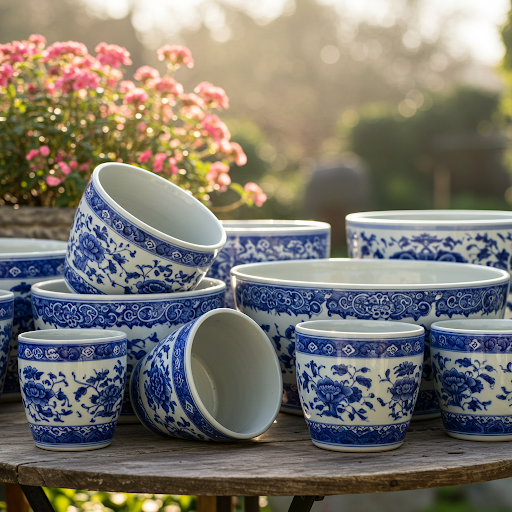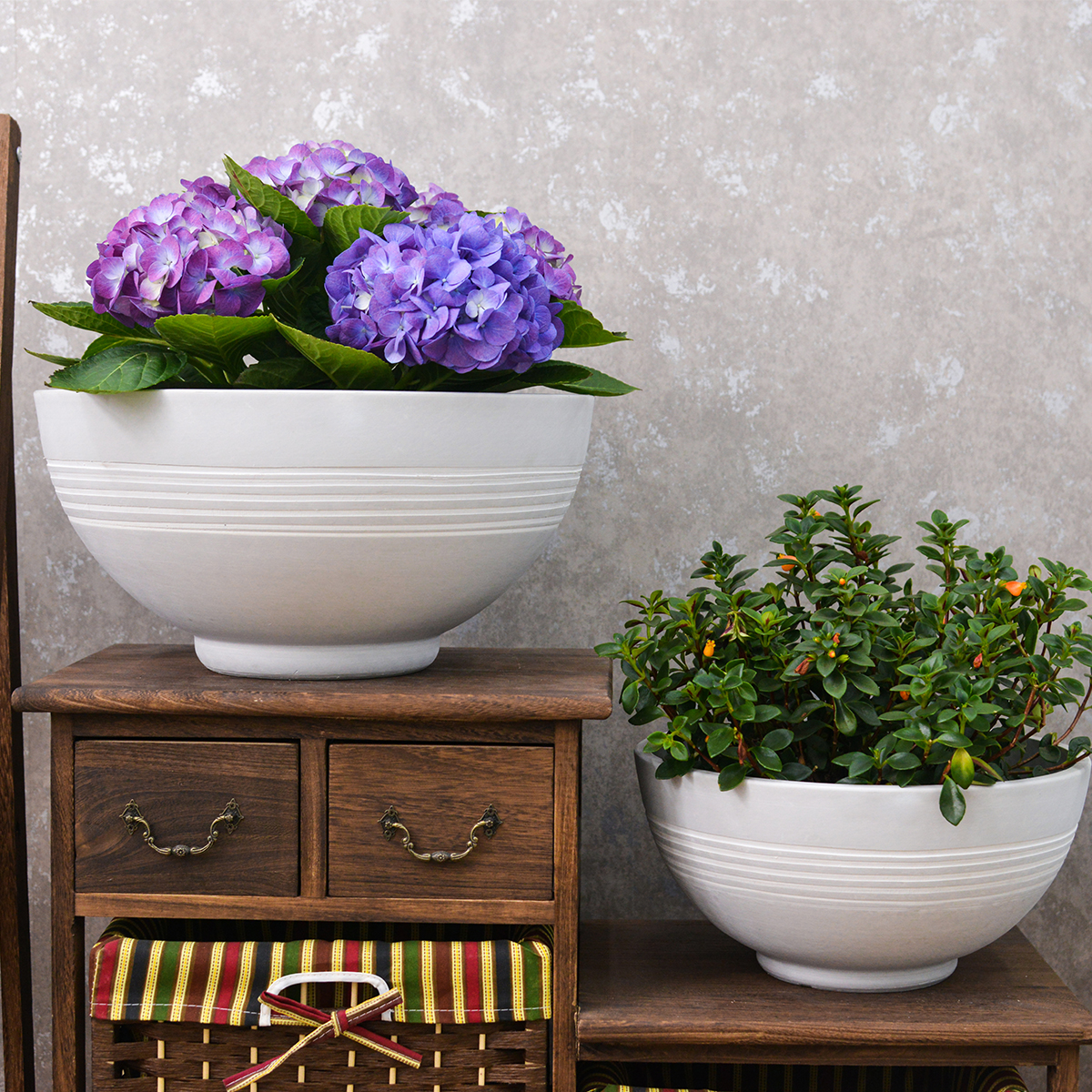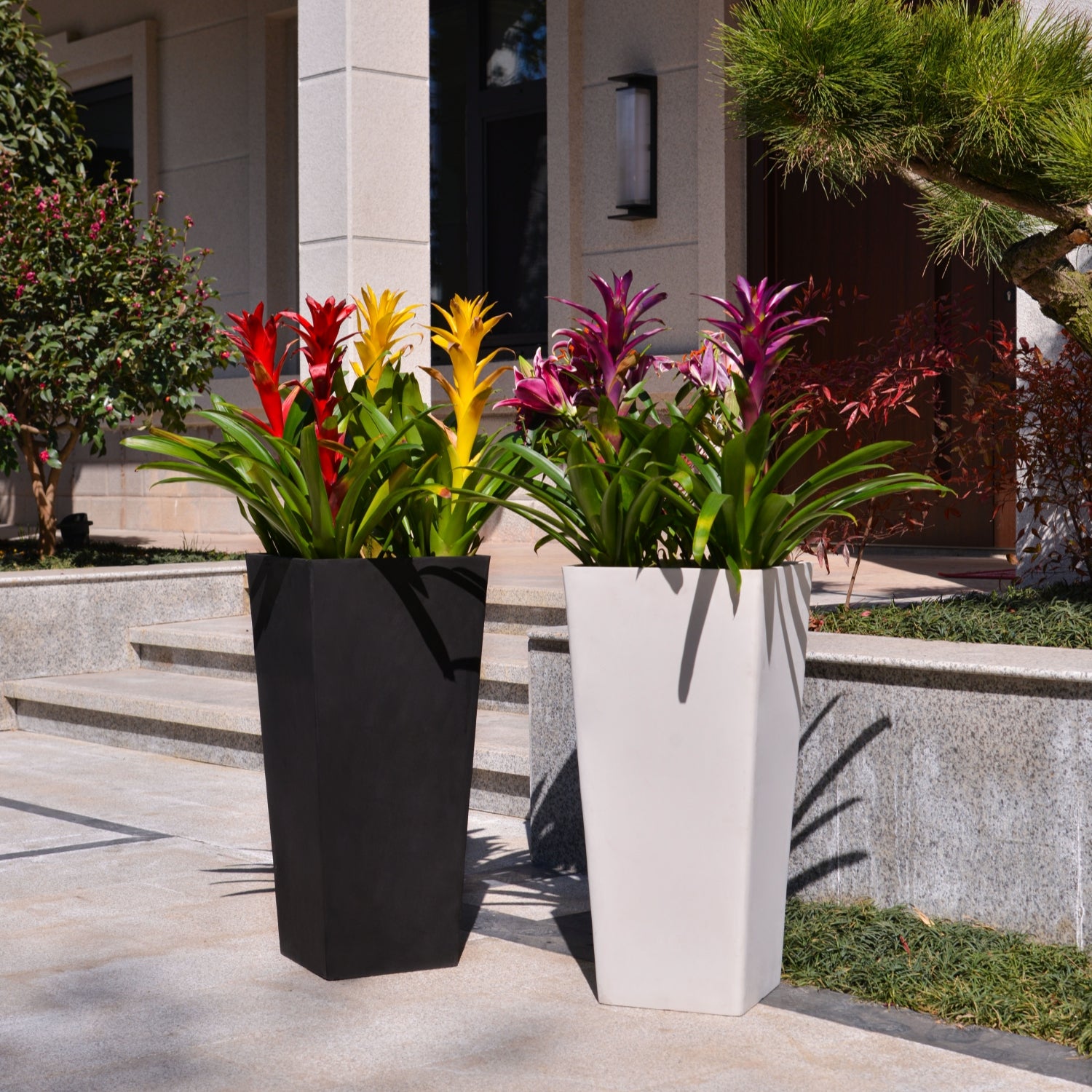What Sizes Do Planters Come In? A Comprehensive Guide to Planter Dimensions
Stepping into the world of planters can be exciting, but also a little overwhelming! From tiny terracotta pots to massive outdoor containers, the sheer variety of planter sizes available can be confusing. Are you wondering what sizes planters actually come in, and how to choose the right dimensions for your plants? You’re not alone! Understanding planter sizes is essential for successful gardening, whether you’re potting up a delicate succulent or establishing a thriving balcony garden.
This article will be your comprehensive guide to demystifying planter sizes. We’ll explore the common units of measurement, typical size ranges for different types of planters, and crucial factors to consider when selecting the perfect dimensions for your plants. Get ready to confidently navigate the world of planter sizes and choose the ideal containers for your green companions!
Units of Measurement: Inches, Gallons, and Liters Explained
Planter sizes are primarily indicated using two main types of measurements: dimensional measurements (inches) and volume measurements (gallons or liters). Understanding these units is key to deciphering planter descriptions.
Dimensional Measurements (Inches): Diameter & Height
- Diameter: Typically refers to the diameter of the planter’s opening at the top rim. This is the most common measurement used for smaller to medium-sized pots, especially round pots. For square or rectangular planters, the width and length of the top opening might be given instead.
- Height: Indicates the vertical height of the planter. Sometimes, planter descriptions will give both diameter and height (e.g., “8-inch diameter x 6-inch height”).
Volume Measurements (Gallons & Liters): Capacity
- Gallons & Liters: These units measure the internal volume or capacity of the planter, indicating how much potting mix it can hold. Volume measurements are more commonly used for larger planters, especially those intended for outdoor use.
- Understanding Volume is Key for Larger Plants: For larger plants, volume is often more relevant than just diameter, as it directly relates to the amount of root space and potting mix available.
Approximate Conversions & Relationships (Important to Note):
- 1 Gallon ≈ 3.78 Liters
- 1 Gallon ≈ 16 cups
- Diameter & Volume are Related, But Not Direct Conversion: While there’s a general relationship between diameter and volume, it’s not a direct conversion formula. The shape of the planter (e.g., tall and narrow vs. short and wide) significantly impacts volume for the same diameter. Therefore, diameter alone is not a precise measure of volume.
- Rough Equivalents – Diameter to Gallons/Liters (for standard pot shapes – these are estimations!):
- 4-inch pot ≈ 0.25 – 0.5 Gallon (1-2 Liters)
- 6-inch pot ≈ 0.5 – 1 Gallon (2-4 Liters)
- 8-inch pot ≈ 1 – 2 Gallons (4-8 Liters)
- 10-inch pot ≈ 2 – 3 Gallons (8-12 Liters)
- 12-inch pot ≈ 3 – 5 Gallons (12-20 Liters)

Common Planter Size Categories: Small, Medium, Large & Beyond
Planters can be broadly categorized into size ranges, although exact dimensions can vary between manufacturers and styles. Here’s a general overview:
Tiny & Miniature Planters (Diameter: 2-4 inches):
- Uses: Perfect for succulents, cacti, air plants, seed starting, very small herbs (like thyme), and miniature novelties. Ideal for windowsills, desks, favors, and terrariums.
- Examples: 2-inch terracotta pots, 3-inch ceramic succulent planters, miniature glass containers.
Small Planters (Diameter: 4-6 inches):
- Uses: Suitable for small houseplants (like African violets, peperomia, nerve plants), herbs (like basil, parsley), starting seedlings, and small flowering plants. Great for small windowsills, shelves, and grouping together.
- Examples: 4-inch plastic nursery pots, 5-inch decorative ceramic pots, 6-inch terracotta herb pots.
Medium Planters (Diameter: 6-12 inches):
- Uses: Versatile size range for a wide variety of houseplants (like snake plants, ZZ plants, pothos, peace lilies – while still young), herbs (larger herb groupings), flowering annuals and perennials, and some vegetables (like peppers, smaller tomatoes). Suitable for general indoor and outdoor container gardening.
- Examples: 8-inch plastic grower pots, 10-inch decorative ceramic planters, 12-inch lightweight resin containers.
Large Planters (Diameter: 12-24 inches+):
- Uses: Designed for larger houseplants (like fiddle leaf figs, monsteras – as they mature, larger palms), shrubs, small trees, larger vegetable plants (like tomatoes, eggplants, squash), and creating statement pieces in gardens and patios.
- Examples: 14-inch terracotta pots, 16-inch and larger resin or fiberglass planters, large wooden or metal containers.
Extra-Large & Jumbo Planters (Diameter: 24 inches+ and Volume: 20+ Gallons):
- Uses: For mature trees, large shrubs, multiple plants grouped together in a single container, creating focal points in landscapes, and for commercial or public space plantings. Often used for long-term plantings.
- Examples: Large half-barrel planters, oversized concrete or stone containers, custom-built wooden planters.
Beyond Diameter and Volume: Other Size-Related Considerations
While diameter and volume are key, other size aspects also matter:
- Depth: Root Depth Requirements – Different plants have different root depths. Carrots and taproot vegetables need deep pots, while succulents have shallower root systems. Ensure the planter depth is appropriate for the root type of your plant, not just the overall plant height.
- Shape: Shape affects both aesthetics and practicality.
- Round Pots: Classic and versatile, good for most plants.
- Square & Rectangular Pots: Space-efficient for balconies and tight spaces, can maximize planting area.
- Tall & Narrow Pots: Can be stylish, but may be less stable for top-heavy plants and can dry out faster.
- Wide & Shallow Pots: Well-suited for succulents, cacti, and plants with shallow root systems.
- Tapered vs. Straight-Sided:
- Tapered Pots (Narrower at the bottom): Can be more aesthetically pleasing but may become more root-bound as roots concentrate at the wider top. Repotting can sometimes be more challenging.
- Straight-Sided Pots: Offer consistent root space throughout the depth and generally make repotting easier.
Choosing the Right Size: Plant Needs & Growth in Mind
Selecting the appropriate planter size is ultimately about matching the container to your plant’s needs and anticipated growth. Here are key questions to ask yourself:
- What type of plant is it? (Succulent, fern, herb, vegetable, houseplant, shrub, tree?) Different plant categories have different general root system sizes and growth rates.
- What is the current size of the root ball? (If repotting, gently remove the plant from its current pot to assess the root ball. As a starting point, the current pot size gives a good indication.)
- How fast will it grow? (Fast-growing plants will need larger pots sooner than slow-growing ones.)
- What is the mature size of the plant? (Consider the plant’s eventual size when choosing long-term planters, especially for trees and shrubs.)
- Where will the planter be located? (Indoor, outdoor, balcony, sunny, shady? Location might influence your preferred size and portability.)
General “Size Up” Rule for Repotting:
When repotting a plant, a general guideline is to increase the pot size by about 1-2 inches in diameter. This provides enough room for the roots to grow without drastically overpotting. For example, if a plant is currently in a 6-inch pot, repot it into an 8-inch pot.
When is a Planter Size “Too Big” or “Too Small”?
- Too Small: Signs include roots growing out of drainage holes, plant drying out excessively quickly, stunted growth, plant constantly tipping over due to top-heaviness.
- Too Large: Signs include potting mix staying soggy for extended periods after watering, slow initial growth, potential root rot (yellowing leaves, wilting despite moist soil), and disproportionately large pot visually overwhelming a small plant.

Conclusion: Sizing Up for Success – Choose Wisely!
Understanding planter sizes is fundamental to healthy container gardening. By considering dimensional and volume measurements, common size categories, and most importantly, your plant’s specific needs and growth habits, you can confidently select the perfect planters. Choosing the right size container provides the foundation for thriving plants, abundant blooms, and a beautiful, flourishing garden, no matter the size of your space! Happy planting!
20VD
By greenship|2024-08-13T06:43:41+00:00August 13, 2024|Categories: Hand-carving Series|
KC3-09k
By greenship|2024-08-16T06:24:36+00:00August 16, 2024|Categories: Hand-carving Series|
Modern Plant Pots with Drainage – Indoor & Outdoor Use (6″ Widths)
By greenship-seo|2025-04-10T06:29:43+00:00February 6, 2025|Categories: Hand-carving Series|Tags: Decorative Flower Pots|
k2-21G
By greenship|2024-08-13T06:17:26+00:00August 13, 2024|Categories: Hand-carving Series|
GreenShip 27inch Tall Planters for Porch, Large Outdoor Planter Pots with Drainage Hole
By greenship-seo|2025-04-10T06:27:21+00:00April 7, 2025|Categories: Hand-carving Series|Tags: Decorative Flower Pots|
KC3-14A
By greenship|2024-08-16T06:26:30+00:00August 16, 2024|Categories: Hand-carving Series|






